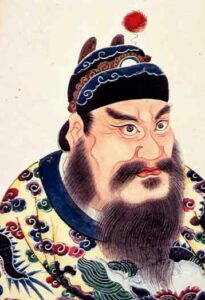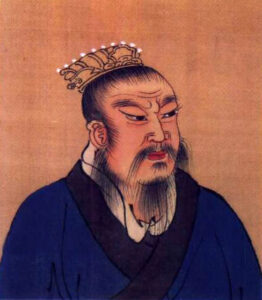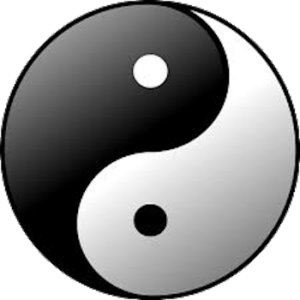History of Asian Martial Arts
From the origins to the founding of the Shaolin Temple
Introduction to the Origins of Martial Arts
The origins of martial arts are ancient and complex, subject to ongoing scholarly debate. Some scholars posit that the earliest forms of stylized combat developed in Mesopotamia and spread eastward along the Silk Road. However, martial cultures have evolved independently in various parts of the world, mutually influencing each other through cultural exchange.
For instance, some research suggests that ancient Mesopotamia witnessed the development of combat techniques that subsequently diffused eastward. Similarly, India possesses a rich martial tradition, such as Kalaripayattu, considered one of the world’s oldest fighting styles. These influences propagated along the Silk Road, an ancient network of trade routes connecting East and West.
We have previously explored this topic in our page “The History of Martial Arts“, in this section, we will focus on the history of Asian martial arts.
Huangdi, the Yellow Emperor, and the Study of Jiaodi
Among the most credible legends, one traces the birth of Asian martial arts back to the third millennium BC. During that era, the legendary Huangdi, the Yellow Emperor, considered the progenitor of the Chinese people, reigned. He was the first to study a form of unarmed combat called Jiaodi, in which combatants, like bulls, charged head-on wearing “horned helmets.” Huangdi’s troops used this combat method around the last decades of 2600 BC, winning what is known as the Battle of Zhuolu, repelling the threat of invasion by the Jiuli tribe, led by Chiyou.
Shortly after (although some sources suggest a reverse chronology), the Yellow Emperor’s troops faced, and again triumphed over, the troops of the Fire Emperor, Yang Di, in the Battle of Banquan. However, a portion of the tales about the legendary emperor is likely of mythological origin, but it is certain that, despite the imperial yellow era being far in the past, the Chinese socio-cultural framework still bears the imprint of Huangdi’s enlightened conduct.
Fifth-century BC scholar-monks reported that even before the reign of the Yellow Emperor, there existed a method of exercises and specific breathing techniques for bodily health, readiness for death, and peace of mind. Perhaps at the foundation of the practices still characteristic of Middle Eastern religions, as well as fundamental in yoga and Chinese longevity exercises, these likely anticipated what would later become the principles of Taoism, which would form the basis of the internal styles of wushu.
Origins of Taoism and Early Historical Sources
More precise historical sources date back to the 11th to 3rd centuries BC, a period when the Zhou dynasty reigned. From the 5th to the 3rd centuries BC, China was divided into small states in constant struggle with each other, the so-called era of the “Warring States.”
Important during this period was the birth of Buddhism in 560 BC, founded by Prince Siddhartha Gautama Buddha in India, which radically influenced the schools of India, China, and Japan.
During the Zhou dynasty lived Confucius (551-479 BC), the great master of Chinese thought, who, around 500 BC, urged young people to practice, in addition to spiritual exercises and study, also the practice of fighting styles such as archery, fencing, chariot racing, and boxing, called by various names: Wuni, Jiji, Jini, etc.
In the same period, Laozi (Lao Tze) was also born, known as “the old man,” author of the Daodejing (the title of the work can be translated as “the classic of the Way and Virtue”), considered a work of immense cultural value, covering fields ranging from philosophy, to individual spirituality, to the dynamics of interpersonal relationships. Taoism and the art of combat were influenced by his thought, thus becoming inextricably linked to mystical and esoteric principles such as meditation, traditional medicine, and alchemy. Chinese medicine, Taoist religion, with its search for longevity and immortality, and martial arts developed, from then on, always in close contact with each other.
At the time of Laozi and Confucius, the noble martial arts were archery and horsemanship. However, there is evidence, in this era, of an art practiced by the noble castes and by certain monks (for obvious reasons, of protection during their pilgrimages, but also for reasons of certain Taoist teachings, according to which, concentration could be favored by the constant practice of certain physical exercises).
Tao is an ancient philosophy, which we can define, superficially, in the following way: in the human body, the primordial energy, or pre-natal energy, which in its natural form presides over the conservation of the species and the individual, is transformed through the exercise of meditation into vital energy, called qi. In the Daodejing, Laozi described the true breathing techniques that aimed to increase a person’s lifespan. This is the first surviving testimony to the use of breathing to improve the circulation of “qi” and longevity. It will be some great Taoists who will later create some defensive movements and subsequently codify them in the style known as taijiquan.
From the Daodejing, we quote some maxims of great importance for our study:
The most yielding in the world/Conquers the hardest.
Man is born weak and tender/He dies stiff and hard[…]/Thus: the rigid and strong are in the way of death/The soft and yielding are in the way of life.
The maxim of the good fighter is:/Yielding to maintain the initiative[…]/He who yields conquers.
During the Zhou dynasty, Sun Tzu also lived, the most famous Chinese theorist of the art of war and author of the treatise The Art of War, whose suggestions are also to be applied to single combat.
It is said that in the period of the Warring States there were the legendary eight drunken immortals of Taoism, wandering mercenary knights, called Yuxie. The historian Sima Qian, who lived during the Han dynasty, in his historical treatise, writes that of these people, although mercenaries, sincerity and honesty were praised. He defined them as trustworthy people, who acted with extreme determination because they were experts in martial arts. Asian martial arts progressed precisely thanks to these heroic figures. According to Sima Qian, Jiji was particularly developed in the state of Qin whose inhabitants were very skilled in hand-to-hand combat.
The First Emperor of China and the Destruction of Ancient Texts
In 221 BC, Prince Ying Zheng (Handan, 260 BC – Shaqiu, 210 BC) took up arms against the Warring States, which he conquered and unified, forming a single great state and taking the name of Qin Shi Huang, literally “First Emperor of the Qin dynasty,” considered the First Emperor of China, as he was the first historical ruler to be adorned with such a title. The very word “China” is generally traced back to “Qin.”
A brilliant and cruel despot, Qin Shi Huang established a policy of absolutism and monarchical centralism, sweeping away any trace of feudalism. He had the imposing terracotta army built and was the initiator of the Great Wall, unified weights, measures, coins, and writing. In 213 BC, on the advice of Li Si, the influential prime minister, in order to eliminate any trace of tradition that could threaten his imperial mandate, he carried out the burning of books and the burial of scholars, a policy that lasted until 206 BC; all ancient texts were burned, except for those of medicine, agriculture, and divination (Yijing). The burning undoubtedly destroyed books on Asian martial arts as well, and this perhaps explains the scarcity of information that has reached us on the subject.
Martial Arts During the Han Dynasty
Liu Bang (247–195 BC), commonly known by the honorary title of Gaozu, succeeded Qin Shi Huang and founded the Han dynasty (206–220 AD), which shaped Chinese culture in an almost definitive way. During the Han dynasty, peace and culture flourished, and with them, martial arts developed significantly, becoming very popular and known as Jiqiao, meaning “skill and talent,” or Shou Bo, meaning “hand that strikes with a fist.”
Martial arts during this period developed significantly, with new styles being continually refined. Figures like Ban Gu, a famous historian who lived in the first century AD, documented martial techniques and strategies used in combat in his work “History of the Han”.
The Han dynasty also introduced Mahayana Buddhism (70-50 BC), known as the “Great Vehicle,” to China. In 184 AD, a popular revolt broke out, called the “Yellow Turbans” rebellion (named after the yellow turban worn by their leader Zhang Jiao), led by a secret society with a Taoist background. After several years, the revolt was brutally suppressed by some military leaders, who then fought each other for power, ousting the Han dynasty in 220 AD.
The First Animal-Inspired Techniques
In the 3rd century AD, the famous Taoist surgeon Hua Tuo (~140-208) devised a series of exercises inspired by five animals: the bear, the deer, the monkey, the crane, and the tiger. These exercises, although modified and perfected by subsequent innovators, still form the basis of today’s Kung Fu gymnastics. They may have inspired the division of combat systems into animal forms, attributed to the Shaolin Temple several centuries later, and still present today in most Kung Fu styles, combined with those of other animals: snake, rat, horse, praying mantis, dragon, etc.
The connection between fighting techniques and animals was not limited to physical aspects but also included the imitation of the behaviors and mentalities of the animals themselves. Each exercise and form of movement was not only physical training but also a method of developing inner strength, agility, and a harmonious mental state. For example, the imitation of the tiger aimed to develop power and ferocity, while the crane symbolized balance and grace.
Hua Tuo claimed that the regular practice of these exercises, a form of Weidan, which he defined as “the games of the five animals,” would “… cure diseases, strengthen the legs, and ensure health.” This holistic approach to health and well-being reflected a deep understanding of the interaction between body, mind, and spirit, which is still a cornerstone of traditional Chinese martial arts.
Guan Yu, Hero of the Three Kingdoms
After the Han dynasty, the kingdom fragmented into three states: Wei in the north, Wu in the southeast, and Shu in the west, which fought each other for power; this period, between 220 and 280 AD, is known as the Period of the Three Kingdoms. It is perhaps the period richest in heroic deeds in Chinese history, during which martial arts and military science in general underwent incredible development, achieving substantial refinements. The exploits of the heroes were on everyone’s lips and it was often difficult to distinguish myth from reality.
This is also the period of one of the most famous popular heroes: Guan Yu (162-219). The exploits of Guan Yu were made famous by the Romance of the Three Kingdoms, written by Luo Guanzhong in the 14th century (around 1330-1400), based on the official historical text of the Three Kingdoms period: the Records of the Three Kingdoms, which cover the period from 189 to 280 AD and were written by Chen Shou in the 3rd century. Guan Yu wielded the halberd in an inimitable manner, which since then, in his memory, is called Guan Dao and is one of the fundamental weapons of Shaolin Kung Fu. During the Ming dynasty, he was even deified and considered the God of War. Numerous temples were erected in his honor.
The Founding of the Shaolin Temple
Following the Three Kingdoms period, there was a brief reunification, but soon after, northern China experienced a period of barbarian invasions that caused its fragmentation into small states and separation from southern China, which remained a unified state. This led China into the era that historians call “North and South,” characterized by a renewed fervor of Buddhist religion, which saw the construction of many temples and monasteries throughout the country.
One of these temples was the Shaolin Temple, founded in 495 AD by the Indian monk Batuo (Buddhabhadra). Located at the foot of the northern slope of Mount Songshan, in Dengfeng District, Henan Province, near the ancient capital of Luoyang (600 km south of Beijing), this temple became famous simply as the Shaolin Temple (Shorinji in Japanese, Sorisma in Korean). In front of the main gate of the temple flows the Shao-xi River, while a forest of tall ancient pines surrounds and protects it. The name of the temple means “Temple of the Young Forest” or “Temple in the Dense Forest of Mount Shaoshi,” both correct and commonly used translations.
Emperor Xiaowen of the Northern Wei dynasty (386-557) had the temple built to house Batuo, who dedicated himself to translating Buddhist scriptures and preaching the doctrines to hundreds of his followers. Among the scriptures he translated are the Avatamsaka Sutra, the Nirvana Sutra, the Vimalakirti Sutra, and others. Batuo also established a training system that included both the practice of meditation and physical training, laying the foundation for the integration of martial arts into monastic life.
According to the Xugaosengzhuan written by Daoxuan (596-667), the monastery was founded by Emperor Xiaowen in 496 under the nianhao Taihe, after moving the capital to Luoyang. The Shaolin Temple became an important point of contact between the practice of Buddhist meditation and the emerging martial arts, for which the monks became famous throughout China. According to many masters, the first true martial art of the East was that practiced in the monastery, called Shaolinquan. Currently, the monks are known for their skill in martial arts, which include a wide range of unarmed combat techniques and weapons.
In 527, the temple welcomed another Indian monk, Bodhidharma (Ta-Mo in Chinese, Daruma in Japanese), considered the founder of Chan Buddhism. It is said that Bodhidharma crossed the Yangtze River on a reed. He spent nine years meditating in a cave in Wuru Peak and began the Chinese Chan tradition at the Shaolin Temple. He was later honored as the first patriarch of Chan Buddhism. His influence on the Shaolin Temple was not limited to meditation: he also introduced a series of physical exercises to strengthen the monks’ bodies, which formed the basis of the subsequent Shaolinquan techniques.
















